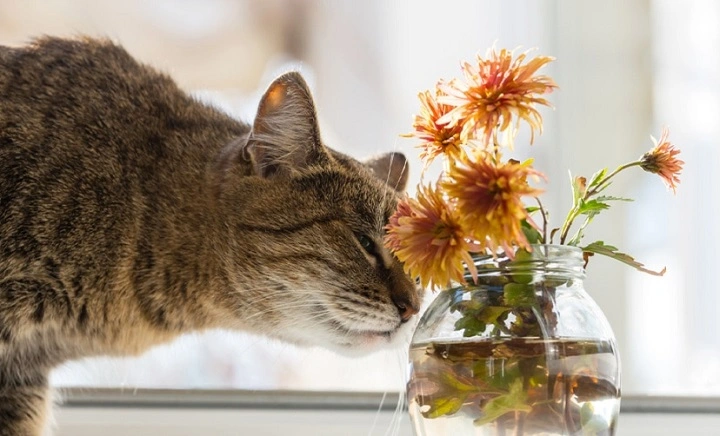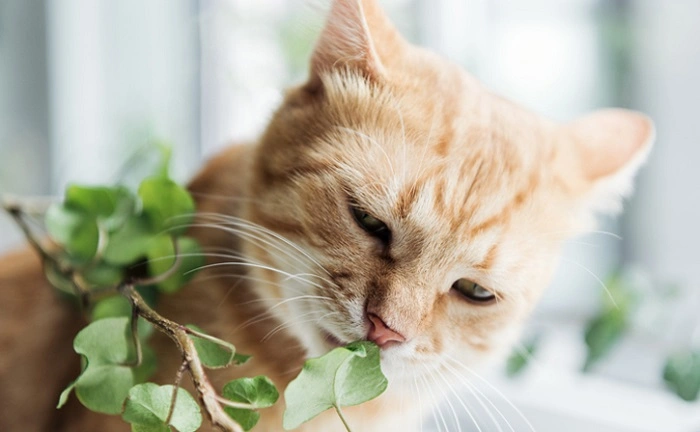Alstroemeria, also known as the Peruvian Lily or Lily of the Incas, is a popular flower known for its vibrant colors and long-lasting blooms. Often used in bouquets and home arrangements, it’s a favorite among florists and gardeners alike. But if you’re a cat parent, you’ve probably asked the important question: Are Alstroemeria toxic to cats?
The short answer is yes—but the full picture is more nuanced. While Alstroemeria is not as dangerous as true lilies, it can still pose health risks if your feline friend decides to nibble on it. In this guide, we’ll break down the potential dangers, symptoms to watch for, and how to keep your cat safe around flowers.
Understanding Alstroemeria and Its Toxicity

What Is Alstroemeria?
Alstroemeria is a flowering plant native to South America. It resembles lilies but belongs to a different plant family. You’ll often see it in:
- Wedding bouquets
- Grocery store floral arrangements
- Garden beds
Its bright petals and streaked patterns make it an attractive choice—but those looks can be deceiving when it comes to pet safety.
Toxicity Level in Cats
Alstroemeria contains a substance called tulipalin A, which is a mild toxin found in the plant’s sap. It’s not considered deadly like true lilies (such as Easter Lily or Asiatic Lily), but it can still cause gastrointestinal upset and skin irritation in cats.
What Happens If a Cat Eats Alstroemeria?
Common Symptoms
If your cat chews on or ingests parts of an Alstroemeria plant, you may notice symptoms such as:
- Drooling
- Vomiting
- Diarrhea
- Pawing at the mouth
- Loss of appetite
- Mild lethargy
The severity of symptoms depends on how much was consumed and your cat’s sensitivity.
Skin Irritation
In addition to ingestion issues, the sap in Alstroemeria can cause skin irritation if it comes into contact with your cat’s nose, mouth, or paws. This might result in redness or excessive grooming of the affected area.
How Dangerous Is It Compared to Other Lilies?
Not a “True Lily”
Unlike true lilies (like Tiger Lily, Easter Lily, and Daylily), which can cause fatal kidney failure in cats, Alstroemeria is not considered highly toxic. That said, any adverse reaction is still a concern.
Better But Still Risky
While Alstroemeria is less dangerous, it’s not entirely safe. Cats with sensitive stomachs or allergies may have stronger reactions, and kittens or elderly cats may be more vulnerable.
What to Do If Your Cat Eats Alstroemeria

Step-by-Step Response
- Remove Access – Immediately remove the plant from your cat’s environment.
- Check for Symptoms – Look for signs of nausea, drooling, or pawing at the face.
- Rinse the Mouth – If possible, gently rinse your cat’s mouth with water using a syringe (no force).
- Contact a Vet – Even if symptoms seem mild, it’s best to call your veterinarian or an emergency pet hotline.
- Watch Closely – Monitor your cat for at least 24 hours for any delayed reactions.
When to Seek Emergency Help
Call your vet right away if:
- Your cat is vomiting repeatedly
- Seems lethargic or unresponsive
- Shows signs of swelling or difficulty breathing
- Has consumed a large portion of the plant
Are Alstroemeria Safe in Cat-Friendly Homes?
Safer Alternatives Exist
If you’re decorating or gifting flowers and you live with a cat, it’s best to avoid Alstroemeria. There are many pet-safe alternatives like:
- Roses (without pesticides)
- Sunflowers
- Snapdragons
- Zinnias
- Gerbera daisies
Keep Flowers Out of Reach
If you must keep Alstroemeria:
- Place arrangements on high shelves
- Use closed rooms for floral decor
- Watch your cat’s curiosity level carefully
Tips for Cat-Safe Flower Arrangements

- Always double-check flower species before bringing them home
- Avoid mixed bouquets unless all components are verified safe
- Use silk or artificial flowers as a safe alternative
- Educate family and guests about your pet’s safety needs
Are Other Pets Affected?
While this article focuses on cats, it’s worth noting that dogs may also experience mild symptoms from ingesting Alstroemeria. However, cats tend to be more sensitive due to their unique metabolism and grooming habits.
FAQ
Is Alstroemeria deadly to cats?
No, it is not considered deadly like true lilies, but it can cause vomiting and other mild symptoms if ingested.
What part of the Alstroemeria plant is toxic?
The entire plant contains tulipalin A, but the sap and bulbs are more concentrated and irritating.
Can cats touch Alstroemeria safely?
Touching may cause mild skin irritation, especially around the mouth or paws. Avoid direct contact when possible.
Is Alstroemeria used in store-bought bouquets?
Yes, it’s common in floral arrangements—always check the label or ask the florist if you have cats at home.
What should I do if my cat ate Alstroemeria leaves?
Remove the plant, monitor your cat, rinse their mouth if needed, and call your veterinarian for advice.



